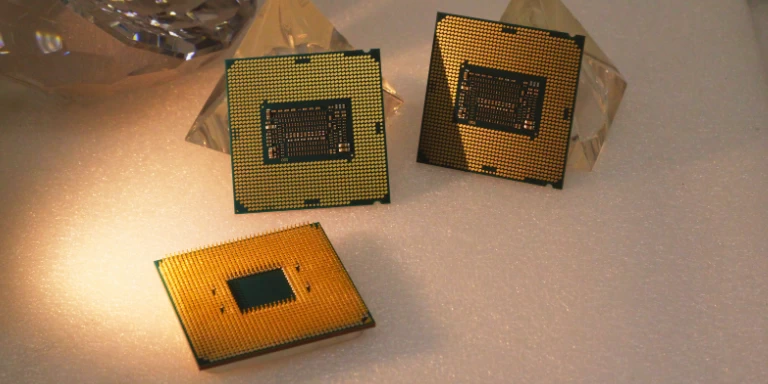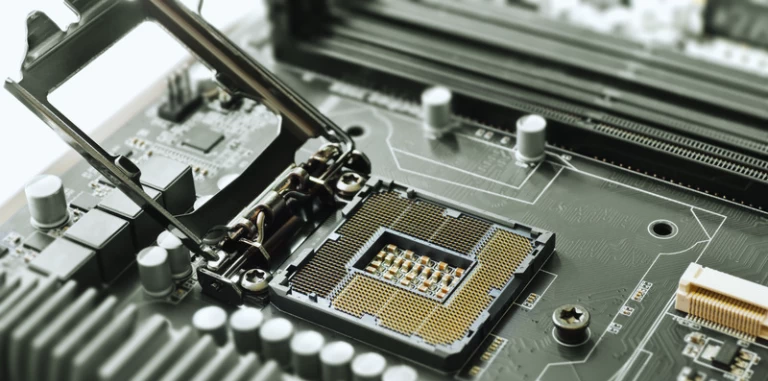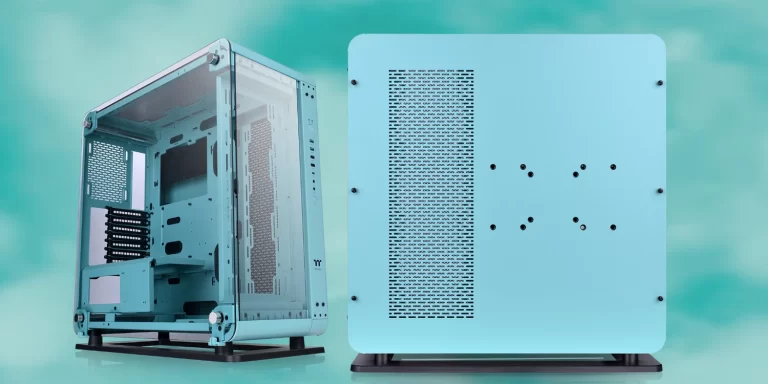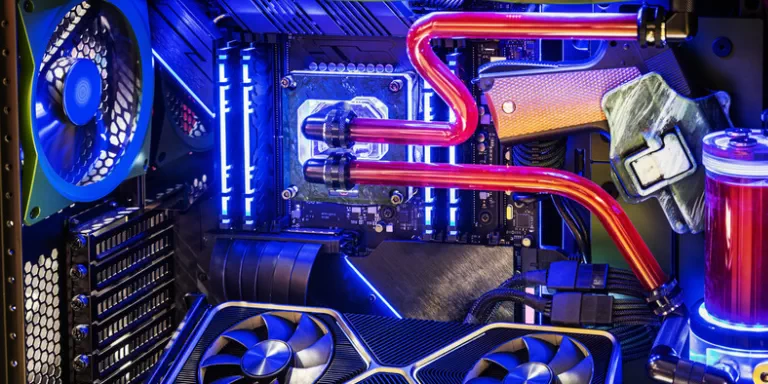
Choosing the right CPU is crucial when building or upgrading a PC. But exactly what is a good CPU speed and how do you determine what’s best for your needs?
The answer, of course, depends on your individual needs. A CPU with a clock speed of at least 3.5 GHz and 4-6 cores will provide solid performance for most users.
In general, higher clock speeds translate to faster processing times and improved overall performance. However, when it comes to determining what a “good” CPU speed is, there are several factors to consider.
It’s also worth noting that CPU speed isn’t the only aspect that affects performance. The amount of RAM you have, the type of storage drive you’re using, and the graphics card you have installed will all play a role in how fast and responsive your system is.
RELATED:
Whether you’re a casual user browsing the internet, a gamer pushing the limits of your system, or a professional running resource-intensive applications, this guide will provide you with the information needed to make informed decisions about your CPU speed. Join us as we delve into the world of CPUs and unveil the secrets to achieving top-notch performance for your PC.
Factors that Determine CPU Speed
To determine CPU speed, be sure to look for important specifications. Here are some of the key ones to watch for.

Clock Speed
Clock speed is one of the most important factors to consider. Measured in gigahertz (GHz), clock speed refers to the speed at which the chip operates, with higher values indicating faster processing speeds.
It’s worth noting that modern CPUs don’t operate at a set clock speed; instead, they adjust the clock speed up or down based on the task and temperature of the chip. This adjustment allows the CPU to balance performance with power consumption and keep the chip from overheating.
Most CPUs have a base (minimum) clock speed and a turbo (maximum) speed listed. The base speed is the speed at which the CPU typically runs when performing low-to-mid intensity tasks such as browsing the web. The turbo speed, on the other hand, represents the maximum clock speed that the CPU can reach when performing more demanding tasks such as rendering videos or playing graphically intensive games.
For example, the AMD Ryzen 9 5950X is a high-end CPU with a base clock speed of 3.4 GHz and a max boost clock speed of 4.9 GHz. It has 16 cores and 32 threads, a whopping 70MB of total cache, and utilizes the Zen 3 architecture. All of these factors combine to make it one of the fastest CPUs on the market for multitasking and demanding workloads.
Processor Cores
The number of processor cores in a CPU significantly impacts its speed and overall performance. Processor cores refer to the individual processing units within a CPU, with each core capable of executing instructions independently in parallel. In other words, the more cores a CPU has, the more tasks it can perform simultaneously, thus leading to better performance.
A relevant example of processor cores is the latest Intel Core i9-11900K, which boasts eight cores. With such core count, this processor can achieve remarkable speed and efficiency, capable of handling demanding applications, such as video editing and gaming, without experiencing any lag or performance issues. The processor’s core count also ensures that other tasks, such as multitasking, run seamlessly without affecting the overall performance.
Threads
A thread refers to a sequence of instructions that a CPU can execute concurrently with other threads. In simpler terms, a thread represents a single path of execution within a program that allows for the operation of multiple activities simultaneously.
To give an example, let’s say we have a dual-core CPU with two threads per core, giving us a total of four threads. With this setup, we can have four different applications running simultaneously, with each thread assigned to a specific application. The CPU can execute each thread independently, significantly reducing the time needed to complete all four applications.
Cache Size
The processor cache is an integral component of modern computer systems, which serves as a faster but smaller memory than the main memory (RAM). It is located close to the processor core and contains frequently used instructions and data to speed up the processor’s performance. The cache memory operates at a much higher speed than the RAM or hard disk drive, thus allowing the processor to access data quickly and efficiently.
The size of the cache plays a vital role in determining the CPU’s speed. The larger the cache memory, the more data the processor can store, and the faster it can access the data. This is because the processor can retrieve data from the cache memory much faster than it can access the data from the RAM or the hard disk drive. Therefore, larger cache sizes result in better performance and faster computing speeds.
One example of a CPU that is affected by the cache size is the Intel Core i9-11900K. This processor features a massive 16MB of L3 cache, allowing it to provide lightning-fast performance and improved multitasking capabilities. The larger cache size provides improved memory performance and enables the processor to execute complex tasks faster, resulting in an overall boost to the CPU’s speed.
Is it better to have more processor cores or a higher clock speed?
When considering whether it’s better to have more processor cores or a higher clock speed, it ultimately depends on the specific tasks that the CPU will be used for. Increasing clock speeds can enhance the performance of single tasks, whereas time-consuming tasks such as 3D rendering or video editing can benefit from more cores for quicker processing.
In terms of a specific CPU, let’s consider two popular options on the market: the Intel Core i7-10700K and the AMD Ryzen 9 5900X. The Intel Core i7-10700K has a base clock speed of 3.8 GHz and 8 cores, while the AMD Ryzen 9 5900X has a base clock speed of 3.7 GHz but boasts an impressive 12 cores.
For tasks such as gaming, the Intel Core i7-10700K may provide a better experience due to its higher clock speed. However, for tasks such as video editing or 3D rendering, the AMD Ryzen 9 5900X’s additional cores would undoubtedly lead to faster performance.
It’s also worth noting that other factors such as cache size, memory support, and power consumption should also be considered when selecting a CPU. Determining whether it’s preferable to have a higher clock speed or more processor cores depends on the intended tasks for the CPU. Making a knowledgeable decision requires considering all factors.
AMD Vs. Intel: Which would you prefer?

When selecting a CPU for your build, you might initially wonder whether to opt for an AMD or an Intel processor. Both companies have powerful CPUs, so the final decision depends on one’s personal preferences and specific needs.
So, what are some of the key differences between AMD and Intel processors that can affect CPU speed?
One factor to consider is the number of cores. AMD has typically offered more cores at a lower price point than Intel, which can make it a favorable choice for those who require high multi-threaded performance for tasks such as video editing or gaming. However, when it comes to single-core performance, Intel has often had the edge.
Another factor to consider is clock speed. Again, both AMD and Intel offer CPUs with varying clock speeds, and the decision ultimately depends on the specific needs of the individual user.
As an example of the differences between AMD and Intel processors, we can compare the AMD Ryzen 7 5800X and the Intel Core i7-11700K. These are both high-performance CPUs aimed at gamers and professionals, but they have different specifications and price points.
The Ryzen 7 5800X features eight cores and sixteen threads, with a base clock speed of 3.8 GHz and a boost clock speed of 4.7 GHz. This processor is often praised for its excellent performance in both gaming and multi-threaded applications, making it a popular choice among enthusiasts.
On the other hand, the Intel Core i7-11700K features eight cores and sixteen threads, with a base clock speed of 3.6 GHz and a boost clock speed of 5.0 GHz. While this processor also offers strong performance in gaming and multi-threaded applications, it is often criticized for its higher power consumption and heat output compared to AMD’s offerings.
While the AMD vs. Intel debate will likely continue for years to come, the decision ultimately rests on individual preferences and requirements. When considering what factors determine CPU speed, it’s important to take into account factors such as number of cores, clock speed, and type of workload being performed. By doing so, users can make an informed decision and choose the CPU that best meets their needs.
What is a Good CPU Speed for Your PC? Laptop vs. Desktop
Basic Tasks PC
For basic tasks such as browsing the internet, word processing, and light photo editing, a clock speed of less than 3.0GHz could be sufficient.
For a basic laptop, an Intel Core i3 processor with a clock speed of 2.4GHz could be an appropriate choice. This processor has two cores and four threads, making it capable of multitasking basic applications. This CPU could handle tasks such as browsing the internet, using productivity programs such as Microsoft Office, and streaming media content without any significant performance issues.
As for desktops, an AMD Ryzen 3 3200G processor with a clock speed of 3.6GHz could be ideal for basic tasks. This CPU has four cores and four threads, making it capable of handling multitasking with ease. Tasks such as browsing the internet, using productivity software, and streaming media content can be executed smoothly and quickly with the help of this processor.
Popular Gaming PC
To determine a good CPU speed and cores for your PC, consider the games you plan to play. For popular gaming (not complex gaming), a CPU clock speed of at least 3 GHz is recommended, with 4 or more cores for optimal performance.
As an example, for gaming on a laptop, the Intel Core i5-9300H Quad-Core Processor, with a clock speed range of 2.4 GHz to 4.1 GHz, is a great option. This processor is suitable for popular games such as Fortnite, League of Legends, and Overwatch, and can handle multitasking with ease.
For gaming on a desktop PC, an Intel Core i7-9700K Processor, with a clock speed of 3.6 GHz and 8 cores, is a high-performance option. It can handle popular games as well as complex ones such as Assassin’s Creed Odyssey or Red Dead Redemption 2, with ease and stability.
Graphic Design or Complex Gaming PC
A good CPU speed is absolutely essential for tasks such as graphic design or complex gaming. So, what is a good CPU speed for these types of tasks? Generally speaking, you’ll want a clock speed of at least 3.5 GHz or higher, as well as at least four cores. This will ensure that your computer can handle the demands of complex software and intensive gaming applications, allowing you to work or play without any lag or slowdowns.
One example of a great CPU for gaming and graphic design is the Intel Core i7-10750H. This processor boasts a clock speed of up to 5 GHz, as well as six cores and 12 threads, making it an excellent choice for running demanding software like Adobe Photoshop or playing games like Call of Duty or Cyberpunk 2077. If you’re shopping for a laptop, you might consider models like the Dell XPS 15 or the HP Spectre x360, both of which feature the Intel Core i7-10750H.
If you’re looking to equip a desktop PC for graphic design or gaming, the AMD Ryzen 7 5800X is another excellent option. This processor features a clock speed of up to 4.7 GHz and boasts eight cores and 16 threads, making it ideal for running complex applications. Pair it with a high-end video card and you’ll have no trouble playing games like Battlefield V or running 3D modeling software like Blender or Maya.
If you are into complex gaming or graphic design, it’s important to give priority to clock speed and core count when choosing a CPU. With the right hardware, you’ll be able to work or play with ease, making even the most demanding applications a breeze to handle.
Workstation
A CPU speed of at least 3.0 GHz would be appropriate for a workstation. Such a speed should ensure dependable performance for tasks like video editing, 3D rendering, and running intricate software.
Regarding the number of cores, a workstation would benefit from a six-core or higher CPU. This would enable multiple tasks to be executed simultaneously and minimize interruptions or freezing.
An ideal example of a CPU that is suitable for a workstation is the Intel Xeon E5-2620 v4. This CPU has a base clock speed of 2.1GHz and can turbo boost up to 3GHz. It also features 8 physical cores and 16 threads, making it an excellent choice for workstations.
Finally, Know What Is A Good Processor Speed For Your PC?
In summary, it is important to know the ideal processor speed for your PC to achieve the best performance and efficiency. The ideal processor speed largely depends on the intended use of the PC, as well as personal preference. For basic tasks such as browsing the web, word processing, and email, a processor speed of 2 to 3 GHz should suffice. For more demanding tasks such as video editing or gaming, a processor speed of 3.5 GHz or higher is recommended.
It’s important to note that a higher processor speed doesn’t necessarily equate to better performance – other factors such as the number of cores, cache size, and thermal design power also play a significant role. As such, it’s essential to consider all these factors when choosing a processor for your PC. Overall, purchasing a processor with a reasonable speed and ample specifications will undoubtedly improve your overall experience with your PC.












